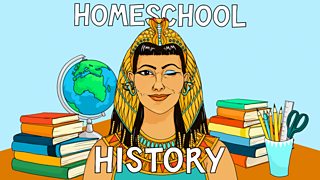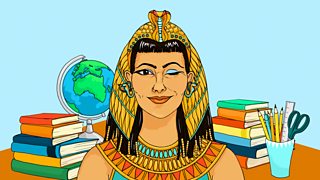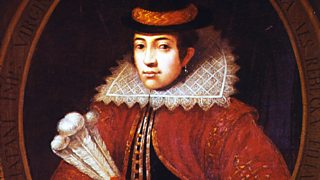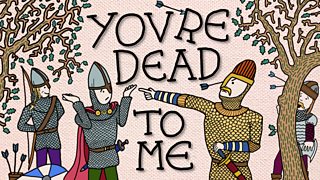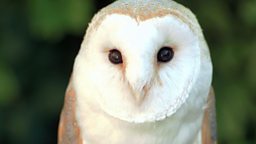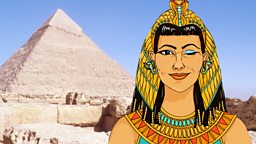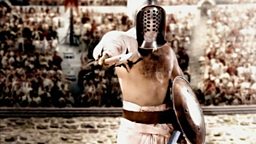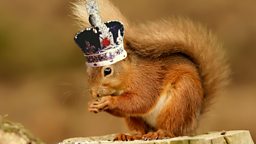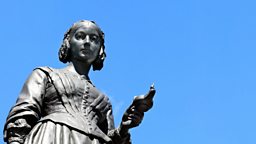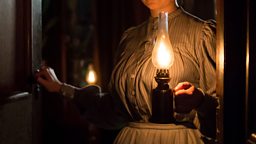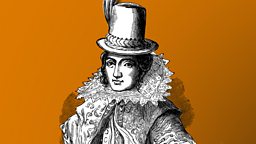Who was the real Pocahontas?
Greg Jenner, the brainbox behind Horrible Histories and You’re Dead To Me has a new podcast called ±«Óătvschool History which makes learning about the past as fun as a bouncy castle full of monkeys.
The latest episode looks at the legend of Pocahontas, the Native American girl who is forever connected to the English colonists of the period, mainly due to a certain Disney film. But which bits of her story are real?
1. We’re not sure when she was born
Historians believe that the figure now more commonly called Pocahontas was born somewhere around 1596 in the part of America now known as Virginia. Her dad was a renowned Native American leader know as Chief Powhatan who was in charge of a group of tribes in the area.
2. Pocahontas wasn’t her name
Many Native American tribes didn’t just have names like Clive or Veronica which they were given when they were born and they were then stuck with for the rest of their lives. Names would often change as people grew older or certain names were kept secret and not shared with others. So ‘Pocahontas’ was actually born as Amonute, but was usually known as Matoaka which means ‘the flower between two streams’.
3. John Smith wasn’t her boyfriend
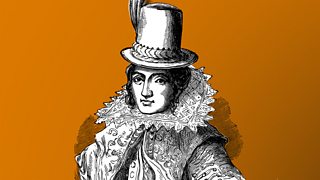
Who was the real Pocahontas?
Greg Jenner explains in ±«Óătvschool History
In Disney’s cartoon version of the story (and elsewhere), Pocahontas is shown to be involved romantically with an Englishman called Captain John Smith. He was real, but not her boyfriend. He was part of a business called the Virginia Company who had travelled from England and set up shop nearby.
Pocahontas was usually known as Matoaka, which means âthe flower between two streamsâ.
4. John Smith wasn’t a reliable witness
Smith claims he was captured by warriors and brought to meet Chief Powhatan who intended to kill him but Matoaka shielded him and saved his life. His story differs from Native American oral histories which say he was never in danger. John Smith had a habit of writing about young women coming to his rescue!
6. She was famous for her cartwheels
The English colonists, including John Smith, had built a new settlement called Jamestown, hoping to make money from the local natural resources to send back to Europe. Matoaka, it is thought, spoke some English and so visited the settlement and played with the local children, teaching them to cartwheel. It is thought she told the settlers her name was Pocahontas (possibly her mother’s name) as she didn’t want to share her real name with them in case they used it for some sort of sorcery. But, as well as trading, the English had another dastardly plan.
7. The English weren’t very nice
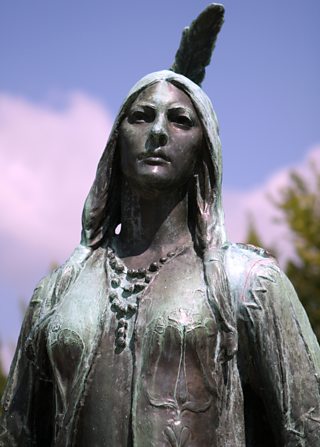
The English colonists thought the best way to convert the local people to their religion of Christianity was by taking their children and having them live with English families. Unsurprisingly, the Native Americans didn’t really approve of this plan and tensions and fighting grew between the two groups.
8. She was married to Kocoum
In the Disney film, Pocahontas resisted being married to brave warrior Kocoum. But in reality, as far as historians can surmise, Matoaka was married and had a child with a member of another tribe named Kocoum. As in the film, Kocoum was killed by the English who tricked Matoaka on to a ship and kidnapped her, hoping to use her as a bargaining chip against Chief Powhatan.
9. She did marry an Englishman
While kidnapped, Matoaka was converted to Christianity by her captors and then married John Rolfe. He had agonised over marrying a ‘heathen’ (as he saw her) and thought he was saving her soul by doing so. Due to her religious conversion, her name was changed once again and she adopted the biblical name Rebecca.
10. She was used as a living advert
John Rolfe had succeeded in growing valuable tobacco crops (possibly with help from local tribes) but the Virginia Company was struggling so, to raise funds, Rolfe and his new bride travelled to England. It was thought that showcasing Matoaka would illustrate the company’s successes in converting the locals to Christianity. She was dressed in elaborate, vaguely regal costumes and displayed at various functions.
11. She met the King
Like much of her life, reports vary as to the life of Matoaka in England. It seems that she did meet King James at a play, though neither she nor her husband realised who it was until later. Although some say she was treated well, others claim she was seen as some kind of living novelty; a strange exotic creature from a far off land.
12. She’s buried in an unusual place
The sad life of Matoaka came to a fittingly tragic end. Trying to return to her homeland, she became seriously ill onboard ship and was taken ashore at Gravesend in Kent, where she died of a mystery ailment. She is buried at a churchyard in the town. Her children with both Rolfe and Kocoum survived and had children of their own and now many claim to be the ancestors of this remarkable figure whose life is shrouded in mystery.
More from Radio 4
-
![]()
±«Óătvschool History: Pocahontas
Greg Jenner gives us a quick history lesson on the Native American princess.
-
![]()
In Our Time: Pocahontas
Melvyn Bragg and his guests discuss the life of Pocahontas.
-
![]()
±«Óătvschool History Lesson: The Space Race
Greg Jenner tells us about Mankind's battle for interstellar glory.
-
![]()
You're Dead To Me
Listen to Greg Jenner's other brilliant history podcast.
